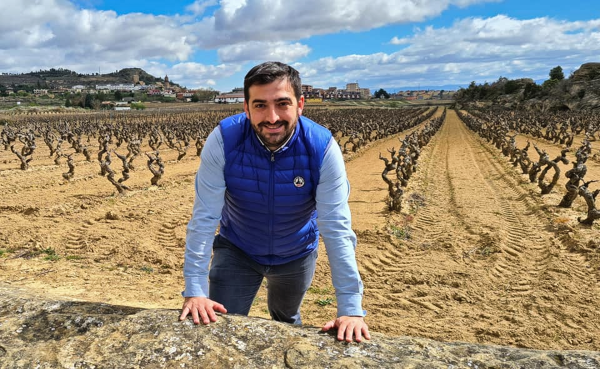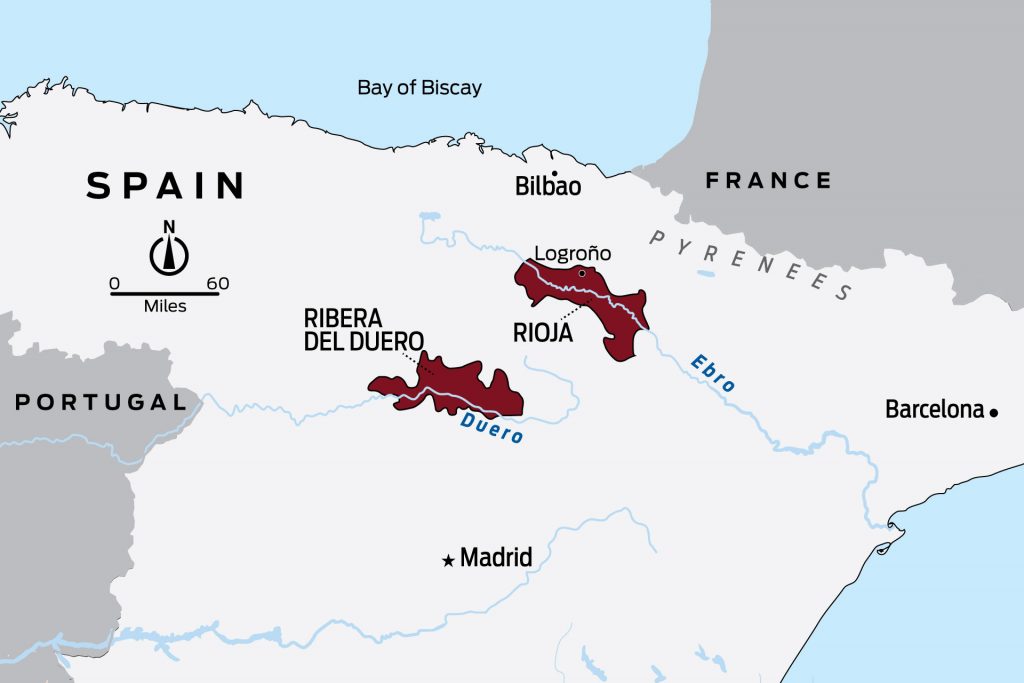Rioja is arguably the most famous wine region in all of Spain - producing fabulous red wines based made primarily from the native grape Tempranillo. Today we'll focus on the winery of Montebuena - one of our favourite unique imports into New Zealand.
Rioja is a large and important wine appellation in Northern Spain.

There are three sub-regions within Rioja. The eastern area is called 'Rioja Orientale' (formerly known as Rioja Baja), the hottest of Rioja, with less chalk and more alluvial soils. The better two sub-regions are Rioja Alta and Rioja Alavesa. These have superior 'terroir' for making wine, especially Tempranillo. Montebuena vineyards and winery is based entirely in Rioja Alavesa.

This is the smallest sub-region, protected by the Sierra Cantabria mountains to the North, with the Ebro river forming its southern border. The name Montebuena translates to 'good mountain' and refers to its location on the rolling hills around the town of Labastida - where the Sierra Cantabria mountains and Ebro River are closest together. The higher elevation in this region brings freshness and balance to the wines.

While the combined group has operated for 60 years, grape growing and winemaking here has persisted for centuries. The best evidence of this is the “lagares rupestres” - stone surfaces carved into the rock where the grapes were crushed, with holes and channels to collect the juice to make wine. These date back to the 9th century and were still in operation until the 18th century.

Montebuena was formed in the mid 1960's a group of 24 small grape growers and vintners in Rioja broke away decided to join forces and create the 'Unión de Cosecheros of Labastida'. Here is some of the old concrete fermentation tanks. Cement is good for maintaining a cooler temperature in fermenting, and also slightly porous (a bit like an oak barrel).

Nothing compares with stainless steel though for cleanliness, and control of temperature for fermentation. Over 2006-2008 Montebuena built a new modern winery.

Toasting the opening of the new winery:

Here is Industrial Engineer Iñigo Rubio who leads the co-op group, his father among the original founding partners of the group amid the 6000 barrels in the Labastida cellars.

The Co-Op has grown over decades to 175 small growers from the region.The vineyards that contribute to the collective total of some 540 hectares (an increase of 160ha in recent years). Depending on the vineyard site, age of the vines, and quality of the fruit, the grapes are destined for one of several different wines produced by the group. Predominantly Tempranillo, with smaller amounts of other native grapes like Garnacha, Graciano, as well as white grapes Viura (and even a little of the newly discovered Tempranillo Blanco!).

Today, cutting edge technology is apparent, the group pioneers a system of weather stations in the vineyards allowing them to monitor the vineyards health, and complex GPS modeling of rainfall levels, solar radiation, leaves’ and vines’ humidity and wind conditions to forecast diseases like mildew and botrytis.

The three reds of our Montebuena collection follow the formal classification system of the Rioja DOC, this hinges around the aging of the wine both in oak barrels and also in bottle. The quality of the grapes from the vineyards determine which of the wines they go into.

The first tier is unceremoniously referred to as 'Genérico', Montebuena opting to label this as 'Madurado'. Wines at this classification are usually 1-2 years old, with modern styles giving a focus on freshness and fruitiness. Usually oak influence is muted, using larger and older oak casks.
The next tier is labeled 'Crianza' (pronounced 'Kree-Ann-Tha'), these wines must age a minimum of 2 years before release, including 1 year in small 225L barrels. Crianza seeks a harmony of the fruitier influences tempered with secondary aromas, flavours and textures derived from oak aging.
Then comes the 'Reserva' wines, a minimum of 3 years aging, are usually more complex because they have three aroma types: fruity (primary), wood (secondary) and ageing (tertiary), such as tobacco, leather, & truffle.
Typically the ascending tiers use the better vineyard sites, with older vines and lower yields resulting in more a profound experience.
We're delighted to continue our association with Montebuena and import their wines into New Zealand. The three reds and their white Rioja are available exclusively from eWine, and a handful of other establishments serving fine wine.



